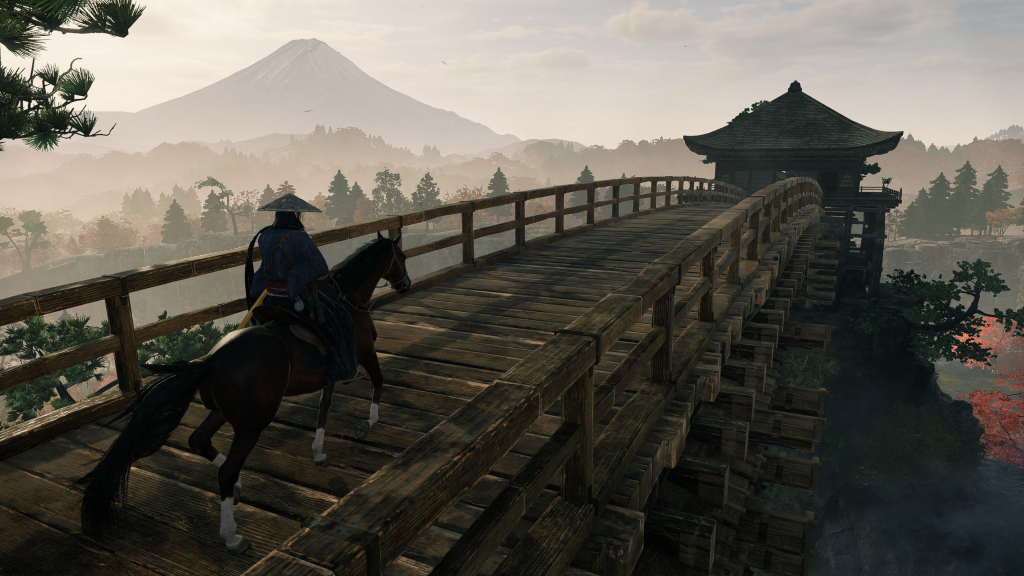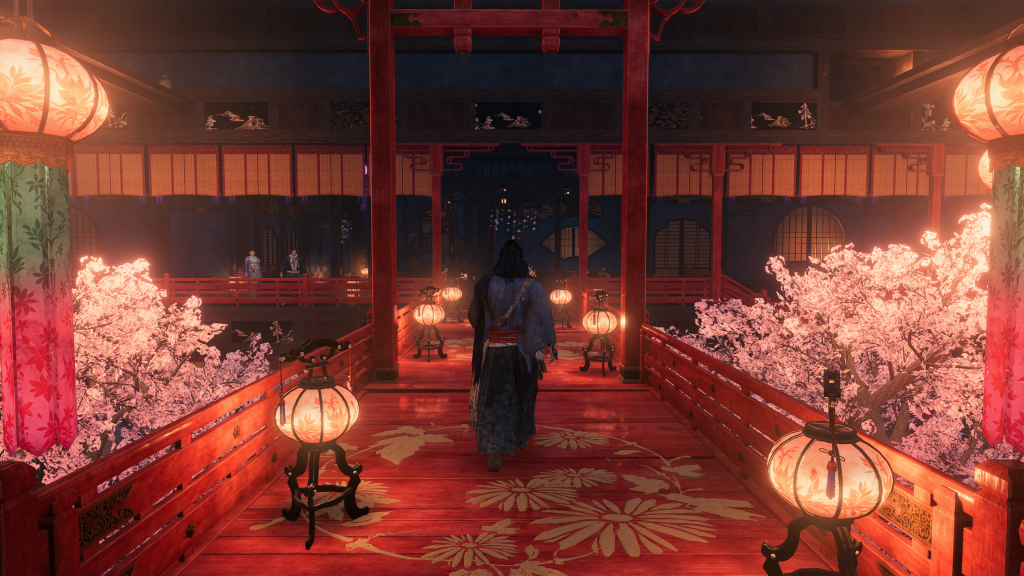Rise of the Ronin is a new IP from Team Ninja (Wo Long: Fallen Dynasty, Nioh) published by none other than Sony Interactive Entertainment. Set during the Bakumatsu period of 19th Century Japan, you play as one of a pair of Blade Twins, members of a hidden tribe raised from childhood to be fearless warriors and assassins. After your first mission goes awry, you journey to the cultural melting pot of Yokohama to mingle with the various warring factions and historical figures at work there.
Rise of the Ronin plays like a lot of other open-world ARPGs. You undertake missions, loot weapons and armour, and unlock new abilities and fighting styles while engaging in minigames and hunting for collectibles. The world is truly open, allowing you to travel from the narrow streets of Yokohama, out the city gates and into the surrounding farmlands, forests and mountains. In this way, the world feels cohesive, like an actual place that exists whether you’re there to witness it or not.
Visually it’s a bit of a mixed bag. Rise of the Ronin can, occasionally, look good, with sunsets and sunrises being a prime example of this. Certain districts at night with their paper lanterns and bright colours have a fantastic atmosphere. Generally speaking, however, it is not a pretty game. Bland textures, basic geometry and low resolution (in performance mode) create a decidedly last-gen experience.
Beyond just the visuals, there is a certain jankiness to the game too. Often animations will have your character’s hand clip through the object they’re holding. The facial animation and lip-synching in dialogue scenes is extremely basic. Not every open-world game can look like Horizon: Forbidden West, but even still Rise of the Ronin comes off as more than a little rough around the edges.
What makes Rise of the Ronin stand apart is its combat. Similar to the Nioh series, each weapon type has different fighting styles you can learn and swap between, with most enemies being weak, resistant or neutral to one or more of your equipped styles. Stamina is referred to here as ki, and is the resource used to block, dodge and attack. If you get hit when your ki is empty you become panicked, unable to move or defend yourself, and the same is true for your enemies.
While an enemy is in this panicked state you can hit them with a critical attack, which features a special animation, blood splatter and satisfying audio sting. Countersparks is the name of the parry mechanic mapped to triangle, which is integral. Successfully parrying an enemy greatly reduces their ki, so getting good at this is essential to panic an enemy much faster than aimlessly slicing and dicing.
The result is a combat system that rewards patience and demands your full attention. Button mashing will not cut it here. Having combat that requires a bit more finesse than your average sword-swinging open-world RPG uplifts the whole experience, and stops the game feeling like junk food. So yes, Rise of the Ronin is certainly more challenging than the likes of Assassin’s Creed. That said, the freedom allowed to you here in how you approach any given combat scenario makes it manageable.
Thanks to how open the world is in Rise of Ronin, most combat encounters can be instigated from stealth. A common sight you will come across are small hamlets taken over by bandits. You could charge straight in with your weapon at the ready, or you could sneak up through some long grass, grapple to a nearby rooftop to strike from above, or even free a prisoner who will then fight by your side. You also have ranged weapons like flintlock rifles and bows at your disposal, to pick enemies off from afar. If all else fails, there are set levels to areas, so you can always skip a particularly tough group of enemies and return later to crush them.
The main narrative is similar to something you would find in Assassin’s Creed. You strike up relationships with real-world figures of the period, both American and Japanese, geishas and inventors, those welcoming foreign trade and those staunchly opposed to it. Mission design is just as familiar, with the majority of them requiring you to infiltrate a dojo or fort or temple and almost definitely culminating in a fight. The story is certainly nothing to write home about, but it’s functional, and the occasional plot beat does manage to register as intriguing.
As for what there is to do in the world, there are lost cats to find, photography missions to complete, shrines to pray at, hidden chests to uncover and tough fugitive enemies to take out. It’s all standard fare, but there are some interesting twists. For example, you can send the cats you find on little missions of their own, netting you money and other rewards after a certain amount of time. Getting around with your horse and the glider makes traversal fun and it never feels like you’re slogging through huge open nothingness.
The map is broken up into sections and you have a ‘bond’ with each region. As your bond increases more and more things will show up on the map. This is an interesting variance as it means you’re not immediately overwhelmed by a million icons at once and can focus on one little section at a time.
Rise of the Ronin doesn’t reinvent the wheel. It follows in the footsteps of the many open-world, action RPGs set in a defined historical period that have come before it. As far as providing a satisfying, decently challenging and fun adventure in a specific time and place, it does its job well enough. However, the ground it treads is extremely familiar. There is very little innovation here and while the combat system does feel somewhat transgressive for the genre, it isn’t enough to elevate the game to something truly special.
Rating: 7.5/10
Rise of the Ronin was reviewed on PS5 with a code provided by Sony.






